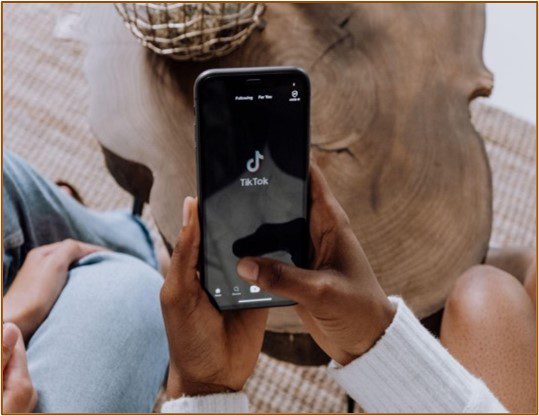
While YouTube used to be the primary hub for viral videos and trends like the Harlem Shake, started by comedian and YouTuber George Miller in February of 2013, TikTok has recently become the new hotbed of fast-moving trends. Most notably, TikTok hosts a slew of viral dance videos, with the platform’s most followed creator being Charli D’Amelio, an influencer who got her start by participating in dance trends and now has over 124 million followers. However, not all of TikTok’s viral content is dance oriented and lighthearted. Recently, a trend has emerged where posters, mainly white males, upload video with them acting as if they are getting arrested with a remix of Rihanna’s song “Diamonds” playing in the background. Dubbed the “getting arrested trend,” participants have received backlash for romanticizing arrest amid the Black Lives Matter movement and continued fight against police brutality.
It’s unclear where the trend started, but it gained popularity when popular TikTok creator Gage Bills participated in it by posting a video of himself in the “getting arrested” format. Several users on TikTok quickly began making fun of these videos through humor and parody. The conversation was then taken up on Twitter after YouTuber and online personality DefNoodles posted about “TikTok’s new cringy viral trend.” While the responses on TikTok and Twitter differ, both platforms reveal the public’s distaste for the videos included in the trend. At best, they are viewed as “cringy,” as highlighted by the various parodies made by TikTok creators poking fun at the edgy arrest videos. At worst, such romanticized arrest stunts trivialize a serious issue faced by many Black Americans, a point emphasized by much of the criticism of the trend on Twitter.
A more aesthetic reason driving the criticisms of the “getting arrested trend” was the sheer awkwardness of the videos, a fact noted in the creation of many parody videos posted on TikTok. One TikTok personality, Brody Wellmaker, created a parody where he plays the role of a parent walking in on their child pretending to be arrested in their room. In the video, the parent’s response conveys a sense of embarrassment and shame at their child’s behavior. Another creator, Steven Noh, posted a similar video pretending to be the “girlfriend” watching her “boyfriend” get arrested. The “girlfriend” portrayed by Noh responds to a “getting arrested” video by being extraordinarily sarcastic, making obvious to the viewer that Noh’s “bad acting” is intentional and meant to poke fun at the original video. His humorous reaction conveys a clear judgement of the genre as embarrassing and cringeworthy. If you search “getting arrested trend” on TikTok, parody reactions such as these now outnumber the original videos, indicating just how uncomfortable, embarrassing, and strange many TikTok users found this trend to be.
Another common criticism can be seen in the response on Twitter, where users took a more critical approach and discussed the cultural implications of the trend. One user tweeted, “I need the getting arrested TikTok trend to be explained to me … do y’all think it’s hot … it’s nauseating to me personally,” while another tweet said, “I just wanna know why all these Caucasians on TikTok are fetishizing getting arrested,” (Rao, 2021). Elizabeth Jeglic, a professor of psychology at John Jay College, said the fact that mainly white men participate in the trend is “kind of tone deaf” in light of the recent events involving police brutality and the Black Lives Matter movement (Haasch, 2021). According to the NAACP, one out of every three Black boys today can expect to be sentenced to prison compared to one out of every 17 white boys (NAACP, 2021). Additionally, the NAACP reported that “84% of Black adults say that white people are treated better than black people by police” and “63% of white adults agree,” (NAACP, 2021). After the death of George Floyd, a New York Times examination found that black people “were on the receiving end of 58%” of the Minneapolis city’s police “use of force” incidents while making up 19% of the city’s population and 9% of its police force (Balko, 2020). It is easy to see why people view a trend where mostly white males pretending to be getting arrested is problematic. But why exactly did this trend go viral if its problematic nature was so obvious to viewers? Dr. Ruth Penfold-Mounce, from the University of York, said that a “fascination with people who break the rules and who do what most people would never dare suggests a degree of audacity, nerve and creativity—all characteristics that are generally admired. The recent TikTok trend seems to reflect this age-old fascination for criminality but combines it with the performance of either beauty and sensuality” (Flood, 2021). Popular TikTok creators combine their generally accepted attractiveness (part of which helped gain them an audience in the first place) with the performance aspect of being arrested and the fascination with criminality that the younger generations seem to have.
The widespread negative responses across TikTok and Twitter lead many to wonder whether social media companies have a responsibility to regulate certain types of content. Having these trends regulated could help curb offensive content on the platform, potentially protecting marginalized audiences and preventing feelings of discomfort in audiences online. However, leaving it alone allows the public itself to engage in a form of social regulation that signals to viewers why certain behaviors may be seen as inappropriate. Ultimately, TikTok did not take action against this trend because it doesn’t violate any community guidelines, and like most trends, this one has already slowed down considerably and taken a backseat to new popular content. However, there will likely be future instances of trends that push the limits of what is considered ethical entertainment. How should users and platforms navigate the blurry distinction between “cringy” and harmful trends?
Discussion Questions:
- What is ethically problematic with the “getting arrested” video trend? What values are in conflict in this case?
- Are there any problems with making parody videos criticizing the trend? Is this a good use of speech on a platform like TikTok?
- Should TikTok do anything about the “getting arrested trend?”
- With trends coming and going so quickly, is it realistic to hope for platforms to curtail such user generated content that merges bad taste with offense and humor?
Further Information:
Balko, R. (2020, June 10). “Opinion | there’s overwhelming evidence that the criminal justice system is racist. here’s the proof.” The Washington Post. Available at: https://www.washingtonpost.com/graphics/2020/opinions/systemic-racism-police-evidence-criminal-justice-system/#Policing
Flood, R. (2021, September 7). “People faking arrest by cops is the latest bonkers trend to emerge on TikTok.” Newsweek. Available at: https://www.newsweek.com/tiktok-trend-pretend-arrest-police-viral-1626754
Haasch, P. (2021, September 3). “A new TikTok trend where users pretend to be handcuffed and arrested has sparked a wave of mockery and criticism.” Insider. Available at: https://www.insider.com/tiktok-fake-arrest-trend-videos-explained-2021-9
Rao, K. (2021, August 31). “‘Beyond disgusting and insensitive’: Tiktok’s bizarre new “getting arrested” Challenge slammed online.” Sports news. Available at: https://www.sportskeeda.com/pop-culture/beyond-disgusting-insensitive-tiktok-s-bizarre-new-getting-arrested-challenge-slammed-online
NAACP. (2021, May 24). “Criminal justice fact sheet.” NAACP. Available at: https://naacp.org/resources/criminal-justice-fact-sheet
Authors:
Claire Coburn and Jamie Jelinek
Media Ethics Initiative
Center for Media Engagement
University of Texas at Austin
September 15, 2022
Photo by cottonbro from Pexels
This case was supported by funding from the John S. and James L. Knight Foundation. It can be used in unmodified PDF form in classroom or educational settings. For use in publications such as textbooks, readers, and other works, please contact the Center for Media Engagement.
Ethics Case Study © 2022 by Center for Media Engagement is licensed under CC BY-NC-SA 4.0



